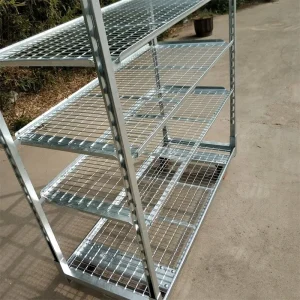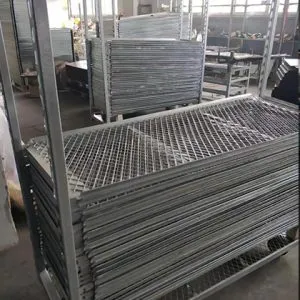Évitez que votre demande ne tarde à répondre, veuillez saisir votre WhatsApp/Skype avec le message, afin que nous puissions vous contacter dans les plus brefs délais.
Nous vous répondrons dans les 24 heures. En cas d'urgence, veuillez ajouter WhatsApp/WeChat : +8613791936882,. Ou appelez directement le +86-18678911083.
Wire mesh isn’t just a product—it’s the backbone of dozens of industries, from filtration to architecture. This in-depth guide will unravel everything you ever wanted to know about wire mesh, including the secrets of wire, mesh size, custom manufacturing, weave types, and the surprising versatility of welded wire mesh and expanded metal. Whether you’re a DIY enthusiast, an engineer, or navigating your first architectural project, this article will equip you to choose, specify, and fabricate the perfect wire mesh solution for your needs.
Wire mesh is one of the unsung heroes of modern manufacturing and construction. At its simplest, wire mesh is a grid or screen formed from interlinked wire strands, typically made from metals like stainless steel, galvanized steel, plain steel, or specialty alloys. This humble-looking material is found everywhere: in fences, sieves, filtration systems, security cages, and even as bold design features in architectural projects.
Why does wire mesh matter? Its unique blend of strength, flexibility, and countless mesh opening configurations means it can be tailored for almost any application. Whether you need corrosion resistant partition walls for warehouses, delicate filtration for laboratories, or heavy-duty fencing for external security, understanding wire mesh is crucial. Wire mesh isn’t just another metal product—it’s a shapeshifter with a mesh size, wire diameter, and weave style for every scenario.


The heart of any wire mesh is, of course, the wire itself. But not all wire is created equal. Your choice of wire material type and diameter defines how your mesh will perform.
Wire is commonly manufactured from stainless steel, galvanized steel, plain steel, carbon steel, and copper alloy. Each offers different properties. For example, stainless steel has outstanding corrosion resistance and is favored in harsh, wet, or hygienic environments. Meanwhile, galvanized steel is popular for outdoor uses where resistance to corrosion is needed but costs must be kept lower.
Wire diameter, sometimes called “diameter wire,” is another critical factor. Thicker wire increases the strength and rigidity of the mesh, while thinner wire allows for more flexible or delicate mesh products. Wire diameters are specified to tight tolerance: even a slight variation can change the mesh’s open area, material flow, and the number of openings in a given mesh size.
When specifying a wire mesh product, always consider the alloy or coating: different grades of stainless steel (like type 304 or type 316) offer varying levels of corrosion resistance and strength. For special uses, copper alloy or even pvc coated wire may be the best fit.
The words “mesh count,” “mesh size,” and “opening” are often tossed around, but what do they really mean? In wire mesh, these terms unlock the secret of how well your mesh will perform.
The size of the mesh opening dictates what passes through and what’s kept out. Small openings in wire mesh enable precise filtration, while larger openings are used for fencing or architectural infill panels. Getting these measurements right—matching your required mesh size to your wire diameter and open area—is essential for success.
Before you order, you’ll need to nail down your wire mesh specification—no two projects are exactly alike.
Width and Length: Standard mesh rolls often come in 36”, 48”, or even 72″ widths, but custom manufacturing allows for virtually any size.
Tolerance: Tolerance describes how much variation is allowed in wire diameter, mesh size, or overall sheet dimensions. For tight-fitting parts (e.g., sieves, machine guards), you’ll need the strictest tolerances.
Open Area and Number of Openings: Critical for screening, partition walls, or filtration, these specs determine how much light, air, or material can pass through your mesh.
Edge Treatments: U-edging can be added for safety, especially where mesh is exposed or used as partition.
Every detail, from the mesh count to the type of perforate or crimp, contributes to the mesh’s performance. That’s why working with a knowledgeable wire mesh industry supplier is essential.
Your choice of material can make or break your wire mesh project. Here’s a quick rundown:
Our Metal Mesh Wholesale Program offers bulk supply of high-quality mesh products including welded wire mesh, woven wire mesh, expanded treillis métallique, perforated metal sheets, and decorative architectural mesh. Manufactured from stainless steel (304, 316), galvanized steel, carbon steel, aluminum, and copper, our mesh is available in thicknesses from 0.15 mm to 10 mm, with aperture sizes ranging from 0.2 mm to 100 mm. Mesh panels can be delivered in rolls, sheets, or custom-cut formats, with optional framing or surface treatments for immediate installation or further fabrication.


Choose your metal carefully! For high-moisture or corrosive areas, stick with stainless or galvanized steel. For decorative or specialized roles, consider alloys or coated mesh.
Wire mesh is everywhere, once you know where to look. Here are some standout applications:
Security Fencing and Partition: Welded wire mesh delivers unbeatable strength for perimeter security, animal cages, and machine guards.
Filtration and Sieves: Woven wire mesh, with its full palette of mesh size and opening options, is essential for filtering solids from liquids or gases and for sieving grains and powders.
Architectural Project Marvels: Custom wire mesh adds a modern, industrial touch to façades, stairwells, and interiors. The choice of weave styles and metals (especially stainless) creates stunning effects with light and shadow.
Material Flow and Handling: Heavy-duty steel mesh is used for conveyor belts, baskets, and sorting grids—critical in mining, food processing, and recycling.
Countless Applications: Gardens, window screens, aviation, electronics, automotive—anywhere strength, ventilation, or filtration is needed.
No other material combines so many features—strength, versatility, easy fabrication, and customizability—as wire mesh.
Now, you’re equipped with the knowledge to select, specify, and order the perfect wire mesh—whether your project demands the finest custom woven treillis métallique, heavy-duty welded mesh, or something in between. Don’t settle for “close enough”—fabricate mesh mastery!